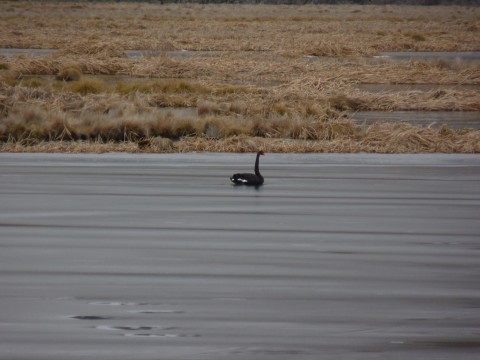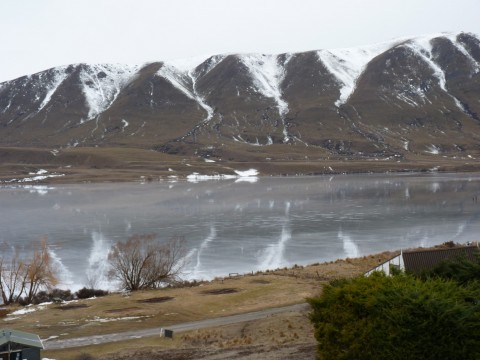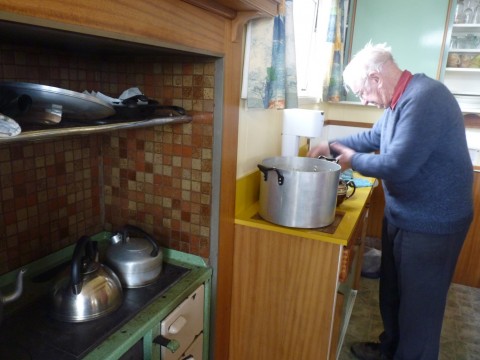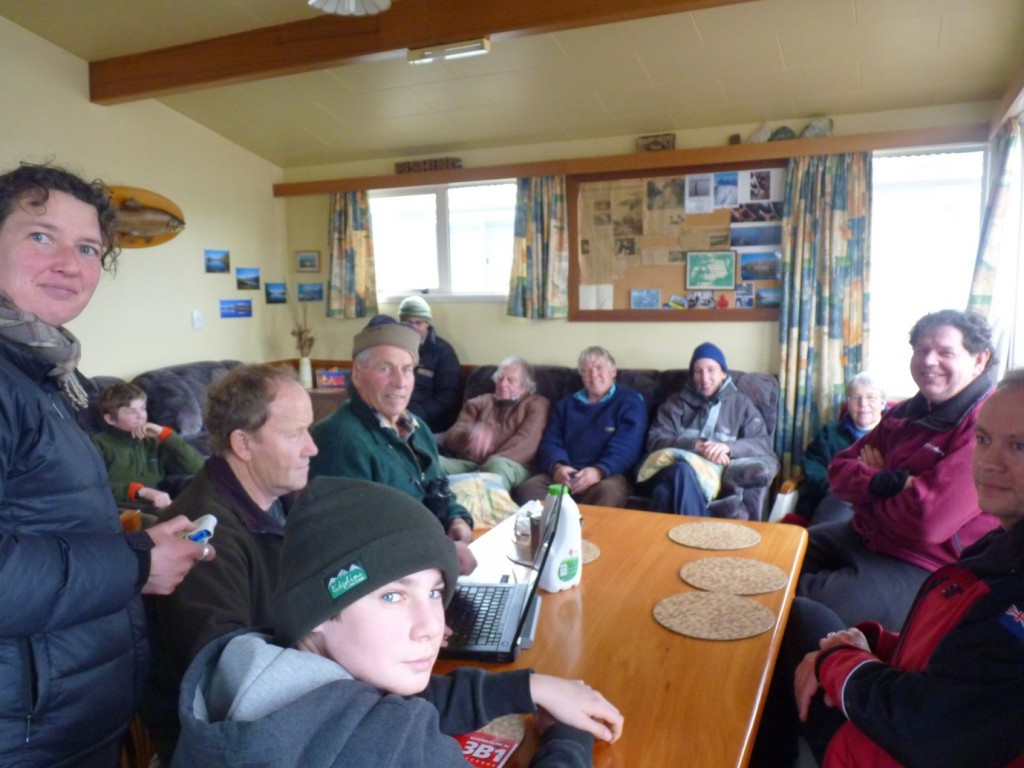The Great Ashburton “Brrrr”d Count
Don’s message came through on Friday –
“If we can get from Mt Somers quick smart, and don’t linger in the field too much, we should be able to squeeze in the count in before the southerly arrives. Then we can sit in Neville’s bach, scoff some hot soup and watch the snow come down, safe in the knowledge that we have the count complete for another year.”
So… 18 hardy souls met opposite the Mt Somers Pub, divided up the surrounding lakes between them and headed for the hills. Every year, a group from Forest & Bird’s Ashburton Branch gather to count the birds on 13 lakes around the region. 28 species have been seen on them, but this year the team was skeptical – as many of the lakes were frozen by heavy snow fall.

Val, Allan & I took on the Maori Lakes, Lake Emily, Camp and Clearwater. Since Allan has a trapping line around the Maori Lakes, he checked the traps as we went, finding 2 rats and 5 cats. His efforts have seen hundreds of predators removed from the area over the past 2 years.
The front Maori Lake had no ice, 21 Black Swans, 61 Canada Geese, 30 Parries, 107 Mallards, 1 Pukeko, 2 Grey Ducks and 1 Black Shag.
The back Maori Lake had few birds since it had 95% ice cover – just 11 Black Swans, 21 Mallards, 1 Black and 1 Little Shag. Unfortunately one swan, still alive, was frozen into the lake.
It was suggested this happens while the swan is asleep on the ice.
As the weather closed in we slid and slithered over the track to Lake Emily, only to find it frozen. Six forlorn ducks stood on the ice and 5 swans were seen around the lake. Another exciting drive out and thanks to Allan’s 4WD driving skills we made it back to Lake Clearwater.
Lake Camp’s only birds were 5 Black Shags and Lake Clearwater was 95% frozen, so its main wildlife was a few hardy souls ice skating in their gumboots and some birds on the outlet stream.
Perhaps the most handsome birds – the Crested Grebe – were all found on Lake Heron this year.
The highlight of the day is always getting back to headquarters at Neville’s bach where he has a huge pot of vege soup waiting and numbers are tallied and recorded by Don. This is the 27th winter bird survey and it has been completed every year except 1995 when snow was too deep.
In other years total bird counts have been as high as 6200, but with this winter’s snowfalls and severe frosts the total was 2890. This was the second lowest recorded total, the lowest being 1986 when Lake Heron was 40% frozen and all other lakes were completely frozen.
As we packed up to leave, the wind arrived, the temperature dropped and the clouds streamed in over Mt Guy and Mt Potts. Despite the cold and the mud, it was another wonderful day in O Tu Wharekai / Ashburton Lakes.

A swan, trapped in the ice, on one of the lakes.

Val & Allan at Maori Lake

Lake Clearwater

The wonderful Neville Adams welcomes all to his warm living room and hearty soup.

The team gather for warm soup at Neville’s bach.
